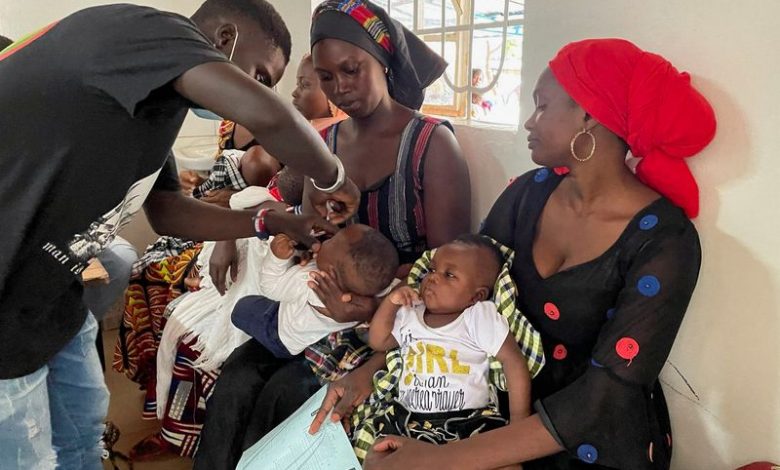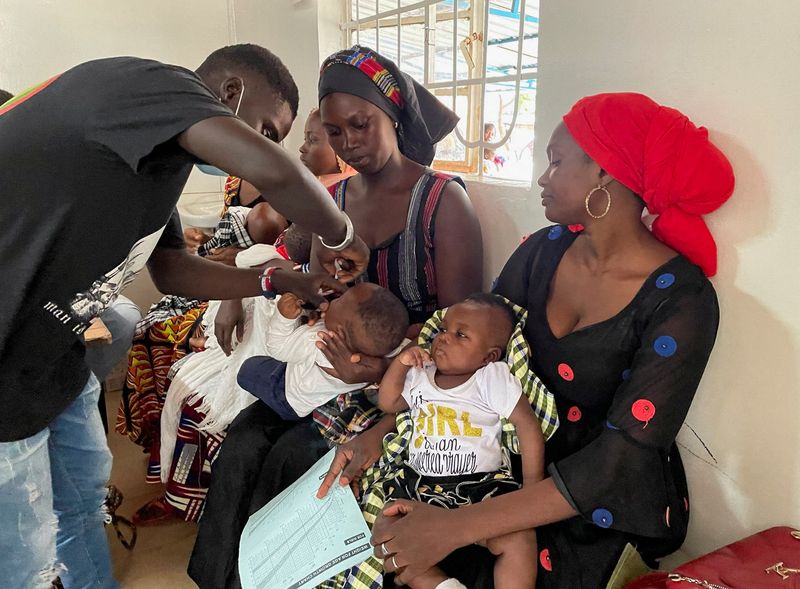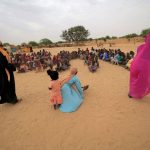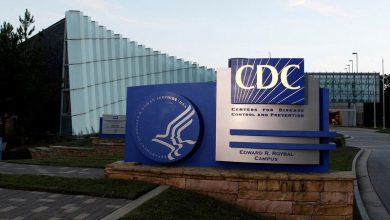Childhood vaccination rates begin to recover post-pandemic – but not everywhere, U.N. says

3/3

FILE PHOTO: A health worker administers a polio vaccine at Bundung Maternal and Child Health Hospital in Bundung, Gambia August 30, 2022. REUTERS/Edward McAllister/File Photo
2/3
By Jennifer Rigby
LONDON (Reuters) – Efforts to vaccinate children worldwide against deadly diseases such as measles and diphtheria began to recover in 2022 after a historic backslide caused by the COVID-19 pandemic, according to new figures from the World Health Organization (WHO) and the United Nations Children’s Fund (UNICEF).
But the recovery remains uneven, with strong bouncebacks in large lower-middle income countries such as India and Indonesia masking ongoing problems in many smaller and poorer countries, the agencies said in a statement released on Tuesday.
In 2022, 20.5 million children missed out on one or more routine childhood vaccines, down from 24.4 million children in 2021. Despite the progress, the numbers are still higher than in 2019, when 18.4 million children were not fully protected.
The numbers are estimated from 183 countries, using data based on the take-up of the three-dose diphtheria, tetanus and pertussis (whooping cough) jab, and include children who got no vaccines at all as well as those who missed any of the doses necessary for protection.
Globally, coverage rates were at 86% pre-pandemic, and 84% in 2022.
WHO Director-General Tedros Adhanom Ghebreyesus said the numbers were “encouraging”, but there were concerns the most vulnerable were being left behind.
“When countries and regions lag, children pay the price,” he said.
Of the 73 countries that saw substantial declines in routine coverage during the pandemic, 34 – including countries such as Angola to Syria – have seen no improvement since or even got worse. Fifteen have recovered to pre-pandemic levels, and 24 were on the route to recovery, the WHO and UNICEF said.
The agencies also warned that measles vaccinations have not recovered as quickly, with 21.9 million children globally missing their first dose in 2022 – 2.7 million more than in 2019 – and 13.3 million their second. In low-income countries, coverage rates for measles actually continued to decline last year, to 66% compared with 67% in 2021, said Kate O’Brien, WHO head of immunization. Measles outbreaks are already on the rise.
“When children are not vaccinated, that means they are not immune to life-threatening diseases,” O’Brien told Reuters in an interview. “Children are going to die.”
Only rates of the HPV vaccination, which prevents cervical cancer, have recovered to pre-pandemic levels. But they remain below the 90% target, at 67% in the high-income countries and 55% in the low and middle-income countries where the shot has been introduced.
Alongside Gavi, the Bill and Melinda Gates Foundation and other partners, the WHO and UNICEF launched a push earlier this year to help countries catch-up on childhood vaccination.
(This story has been refiled to correct the spelling of Diphtheria in paragraphs 1 and 4)












